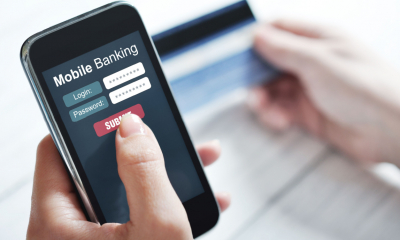
Finance is an industry that is associated with the use of technology to streamline operations and enhance customer experience. More recently, the Internet of Things (IoT) has introduced many innovations to banking and financial services. The IoT integration has improved the functioning of traditional banking as well as new services and platforms.
Integration of IoT in banking and finance
The abbreviation IoT represents the interconnection of devices, sensors, and machines to the internet making them capable of acquiring and exchanging information. In terms of the financial industry, the IoT allows things like mobile devices, and wearables to connect to the internet and perform banking and financial transactions. This gives is access to solutions that allow us to control our money easily and comfortably.
Banking is one of the key areas where IoT has been deployed. IoT allows banks to receive and analyse data on the fly, making it possible for them to understand the behaviour and preferences of the customers. This presents banks with scope to customise their service and products so the customer experience becomes more personalised. In addition, IoT allows banks to manage transactions and identify suspect behaviour and so enhance the security level and fraud detection system.
Benefits of IoT for banking and finance
The benefits of IoT to banking and finance are numerous and diverse. One of the major advantages is the ability to collect and analyse data in real time. Sensors and wearables that serve as IoT devices gather information on customer behaviours and preferences. This allows banks to have a total overview of their clients and to tailor their services according to their profile. If a customer is abroad, the bank can use the IoT data to send the customer targeted offers as well as recommendations on how to exchange a currency or buy travel insurance.
IoT has also increased the safety standards for banks and financial organisations. With transaction monitoring and appreciation of abnormal patterns, IoT assists in fraud prevention and risk management. With the availability of modern technology, banks are now able to execute real-time data analysis and immediately act upon any signs of suspicious behaviour. This has not only diminished the risk of fraud but also strengthened customer trust and confidence in their financial organisations.
A lot of tasks are now automated as IoT systems have been incorporated, cutting operational costs. This has allowed banks to reduce the amount of manual work and channel resources to other value-adding activities. As IoT devices continue to collect and process data, banks can make more accurate and data-driven decisions boosting efficiency and cost-effectiveness.
For clients, IoT has shaped a more simplified and easier banking experience. IoT devices allow customers to have access to their financial information and to do transactions anywhere and at any time. It has also raised fiscal consciousness and control by enabling clients to monitor their transactions and manage their budgets more efficiently.
The adoption of IoT in banking and financial services is transforming how we handle our cash by offering real-time data, increased security, and convenience. The banking and finance sector will keep benefiting from IoT as technology continues to evolve.
IoT applications in the banking and finance industry
The use of the IoT in the banking and finance sector is already widespread and it continues to grow. Payments is one of the most visible areas where IoT has been deployed. IoT devices such as mobile phones and wearable tech have made it possible for customers to pay and transact in a hassle-free manner. For example, customers can pay for their groceries by tapping their smartwatch on the payment terminal. This makes payments easier and more convenient as customers do not have to have cards or cash with them.
P2P platforms are another area where IoT is making a difference. These systems allow individuals to transfer money between themselves and make payments without an intermediary. IoT devices allow these transactions to be made immediately and securely without the need for traditional banking methods.
Future of IoT in the finance and banking sector
IoT has a very bright future in the field of finance and banking. Due to the ongoing growth of IoT development services and IoT technology, we can predict further innovative and convenient developments. Voice-enabled devices are one such area that is expected to grow. This will create the possibility of a smoother and increasingly seamless method of handling our finances.
The deployment of biometric authentication through IoT tools is also picking up speed. This allows customers to use their fingerprints, facial recognition, or even patterns to perform transactions, making transactions more secure.
Conclusion
The adoption of the Internet of Things in the banking and financial industry has introduced major changes in the way we interact with our money. It has revolutionised traditional banking practices and opened up many new opportunities for the financial service sector, particularly around collecting and analysing real-time data. By embracing this innovative technology, banks and financial institutions can offer their customers a more personalised, convenient, and secure experience.
